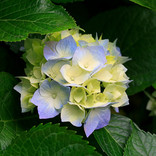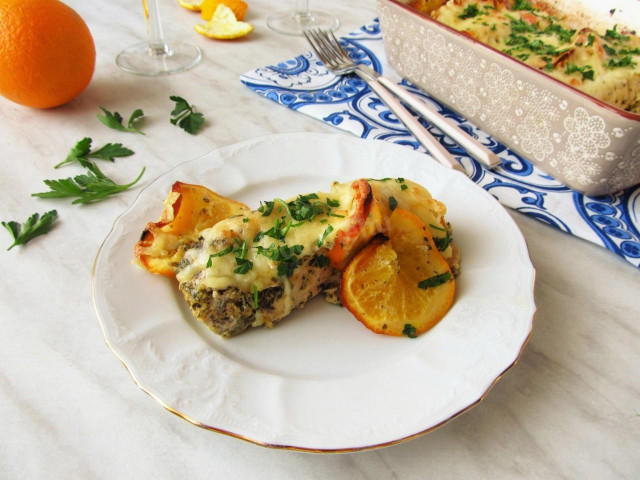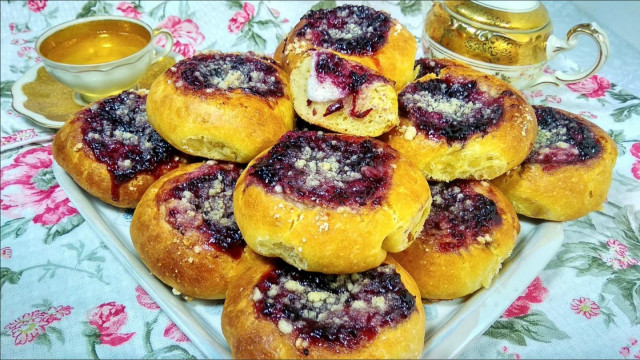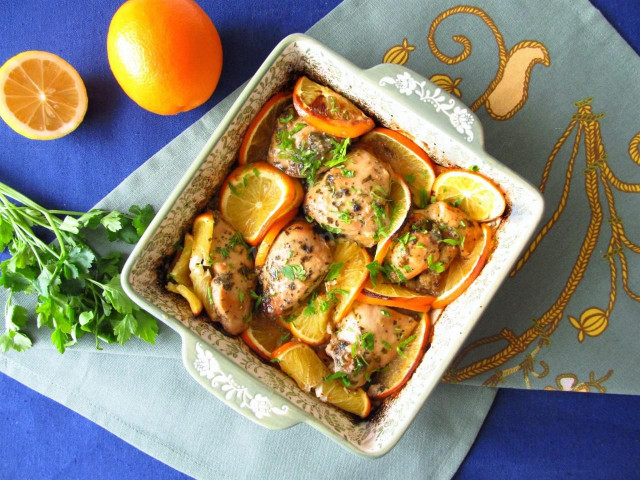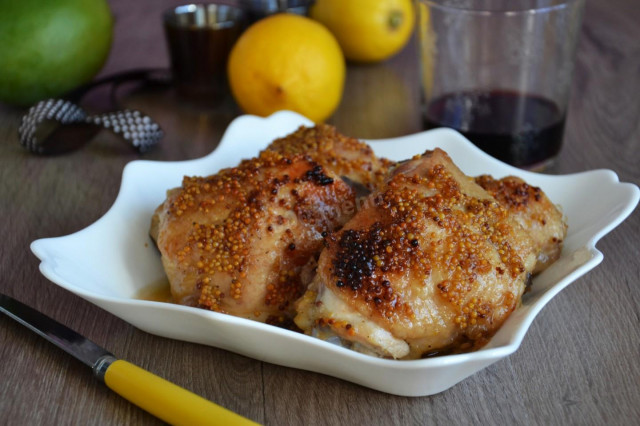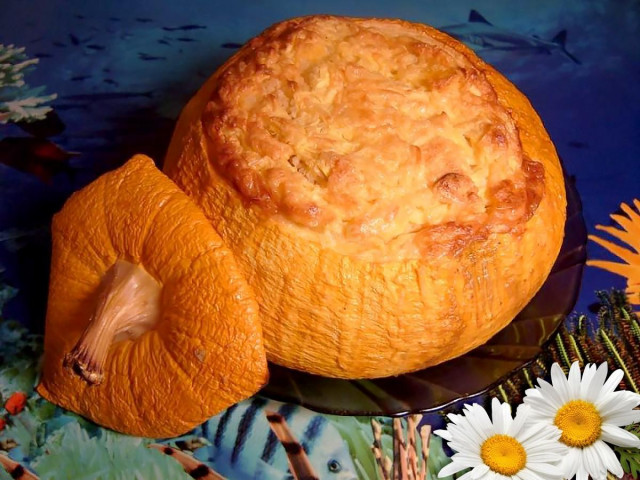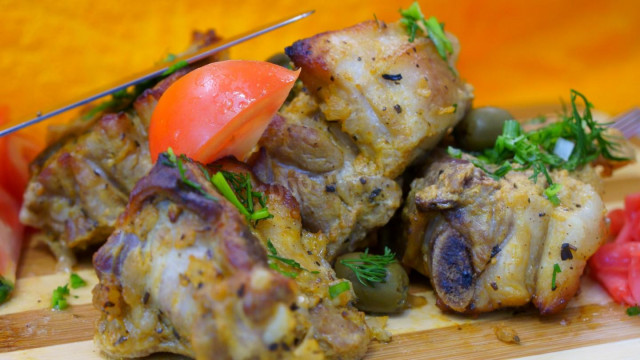Composition / ingredients
Step-by-step cooking
Step 1:
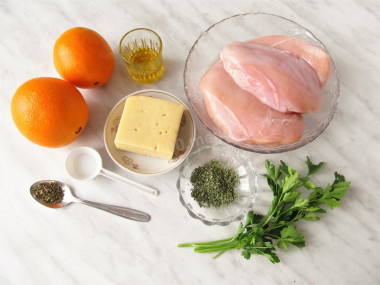
Ingredients.
Step 2:
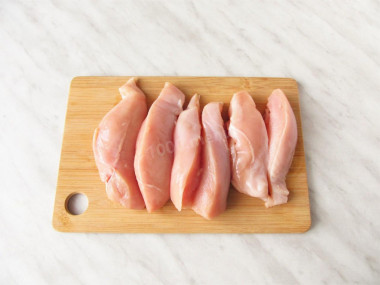
Chicken fillet is mine, well dried. Cut into portions of the desired size. You can cut each fillet lengthwise into two parts.
Step 3:
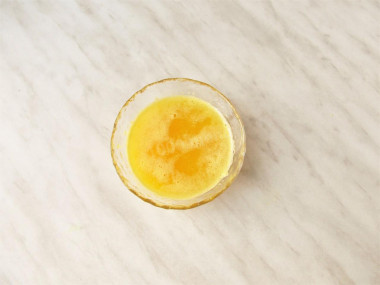
Oranges are well washed. Squeeze the juice from one fruit. You can use a citrus juicer.
Step 4:
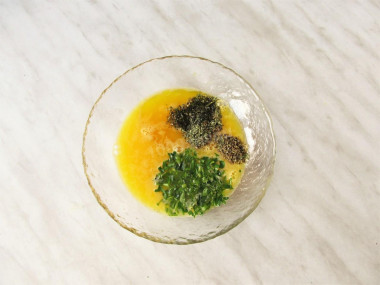
Cooking marinade. Orange juice is combined with olive oil, salt, finely chopped parsley, Provencal herbs and basil. Mix the mixture well.
Step 5:
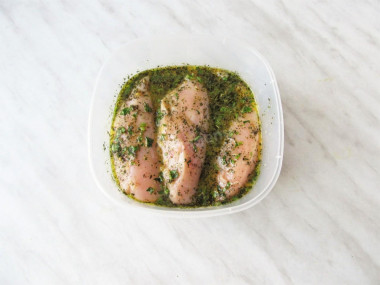
Put the chicken fillet in a convenient container, pour the marinade. It is desirable that the fillet is maximally covered with liquid, this should be taken into account when choosing dishes. We leave the fillets to marinate for 1-1.5 hours. During this time, the chicken will be soaked in orange juice, which will make it softer, and the fragrant herbs will open up a little.
Step 6:
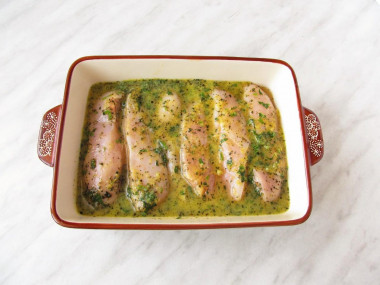
Then put the chicken fillet together with the marinade in a baking dish.
Step 7:
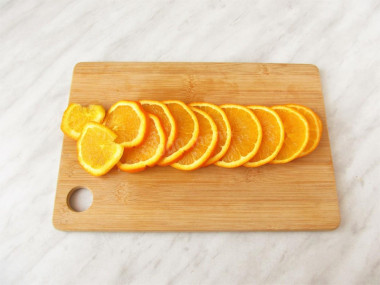
Cut the orange into thin circles.
Step 8:
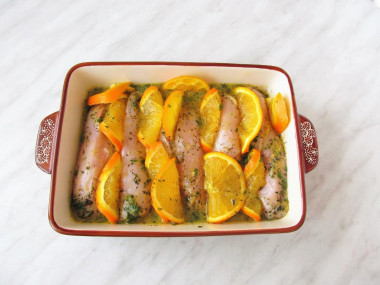
Lay the orange slices between the fillet pieces and on top.
Step 9:
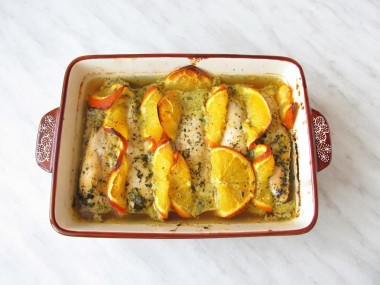
Put in a preheated oven to 200 degrees for 35-40 minutes until lightly browned.
Step 10:
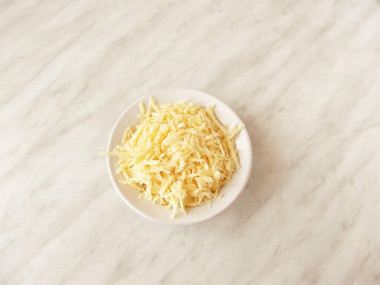
Grate the cheese on a coarse grater.
Step 11:
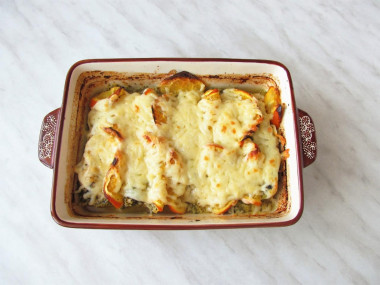
Evenly sprinkle the dish with grated cheese on top and put it in the oven for 10-15 minutes. We are waiting for the cheese to melt. We serve chicken fillet hot with any side dish or fresh vegetables. Bon appetit!
According to this recipe, you can cook any other part of the chicken.
It is advisable not to shorten the pickling time, but it is even better to extend it, then the dish will have a deep, rich taste.
If there are no Provencal herbs, then you can use other aromatic herbs. Rosemary, marjoram, tarragon, thyme, basil are suitable for baking chicken. They can be used in combination or separately. By adding new combinations of herbs each time, you can get a dish with new flavors and aromas.
I wanted to enhance the sweet citrus flavor a little this time, so I added lemon basil.
It must be remembered that when adding spicy herbs, their compatibility and dosage must be taken into account.
Caloric content of the products possible in the composition of the dish
- Dutch cheese - 352 kcal/100g
- Swiss cheese - 335 kcal/100g
- Russian cheese - 366 kcal/100g
- Kostroma cheese - 345 kcal/100g
- Yaroslavsky cheese - 361 kcal/100g
- Altai cheese 50% fat content - 356 kcal/100g
- Soviet cheese - 400 kcal/100g
- Cheese "steppe" - 362 kcal/100g
- Uglichsky cheese - 347 kcal/100g
- Poshekhonsky cheese - 350 kcal/100g
- Lambert cheese - 377 kcal/100g
- Appnzeller cheese with 50% fat content - 400 kcal/100g
- Chester cheese with 50% fat content - 363 kcal/100g
- Edamer cheese with 40% fat content - 340 kcal/100g
- Cheese with mushrooms of 50% fat content - 395 kcal/100g
- Emmental cheese with 45% fat content - 420 kcal/100g
- Gouda cheese with 45% fat content - 356 kcal/100g
- Aiadeus cheese - 364 kcal/100g
- Dom blanc cheese (semi-hard) - 360 kcal/100g
- Lo spalmino cheese - 61 kcal/100g
- Cheese "etorki" (sheep, hard) - 401 kcal/100g
- White cheese - 100 kcal/100g
- Fat yellow cheese - 260 kcal/100g
- Altai cheese - 355 kcal/100g
- Kaunas cheese - 355 kcal/100g
- Latvian cheese - 316 kcal/100g
- Limburger cheese - 327 kcal/100g
- Lithuanian cheese - 250 kcal/100g
- Lake cheese - 350 kcal/100g
- Gruyere cheese - 396 kcal/100g
- Fresh basil - 27 kcal/100g
- Dried basil - 251 kcal/100g
- Parsley greens - 45 kcal/100g
- Oranges - 36 kcal/100g
- Salt - 0 kcal/100g
- Olive oil - 913 kcal/100g
- Chicken breast (fillet) - 113 kcal/100g
- Herb mixture - 259 kcal/100g
